
Man-Made Women
Jon Stratton
© All rights reserved
As the twentieth century proceeded, so the substitution of gynoids (manufactured versions of women) for women became more and more commonplace, and naturalised. One transitional moment in their spread and acceptance occurred in the 1920s. During this period avant-garde artists discovered gynoids. In one example, Oskar Kokoschka, the painter, had a doll made for himself. In 1920 Kokoschka was living in Dresden. He had just broken up with Alma Mahler, with whom he had had a tense three-year relationship. The doll was designed to be a life-size replica of Mahler. Peter Wollen writes that Kokoschka even had Mahler's dressmaker construct the doll. 1 Kokoschka describes his anticipation before its arrival. "I was preoccupied with anxious thoughts about the arrival of the doll, for which I had bought Parisian clothes and underwear. I wanted to have done with the Alma Mahler business once and for all, and never again to fall victim to Pandora's fatal box, which had already brought me so much suffering."
It is clear that in Kokoschka's mind he will desire the doll in a way similar to his desire for Alma Mahler. The reference to Pandora's box (with its subtext of a threatening vagina dentata ) suggest, here, a focused sexual desire. The Parisian clothes and underwear reinforce the fetishistic quality of the experience through their own reference to high fashion. Kokoschka wants to dress his doll, hiding her nakedness and increasing her apparent similarity to a woman. For Kokoschka the doll will be a substitute for the woman with whom he no longer has a relationship, but she will also be an improvement on her. Unlike Mahler, with whom he had constant disagreements - including her having an abortion against his wishes, something which helped precipitate the end of the affair 2 - the doll will be passive and obliging.
The packing-case arrived. Kokoschka writes: "In a state of feverish anticipation, like Orpheus calling Eurydice back from the Underworld, I freed the effigy of Alma Mahler from its packing. As I lifted it into the light of day, the image of her I had preserved in my memory stirred into life. "He got his servant to spread rumours about the doll, to give the public impression that she was a real woman: "for example, that I had hired a horse and carriage to take her out on sunny days, and rented a box for her at the Opera in order to show her off". Finally Kokoschka held a big party during which the servant "paraded the doll as if at a fashion show". Kokoschka tells us that a Venetian courtesan asked him if he slept with it. The question, written late into Kokoschka's narrative and not answered, appears as the admission of a repressed desire. Placed in the mouth of a courtesan it suggests a transgressive sexual desire to which Kokoschka is unable to own up. Finally, Kokoschka's doll seems to have been attacked as the party at which she is revealed to his friends gets more drunken. She loses her head (a Freudian castration image, which here can be read as suggesting Kokoschka's fear of the phallic doll he has had made) and is covered in red wine, a metaphor for blood. Kokoschka ends this story by writing: "The doll was an image of spent love that no Pygmalion could bring to life". Whilst this is Kokoschka's official line, his actual relation to the doll seems to have been much more complex.
During the 1920s Hans Bellmer started making jointed dolls in the form of adolescent girls. He arranged these in erotic poses and photographed them. Bellmer's work was taken up by the surrealists and a selection of his photographs were published in their journal Minotaure in December 1935. In 1936 he published a book of the photographs called Die Puppe . The popularity of Bellmer's work among the surrealists argues for a general recognition in this group of the erotic qualities of gynoids (and of adolescent girls), something present in Marcel Duchamp's work, finished in 1925, entitled Large Glass; The Bride Stripped Bare by her Bachelors, Even.
Because of their associations with consumption and desire, mannequins were of great importance in surrealist art. Margaret Plant remarks:
The mannequin is a key player in the surreal game. Hourglass of figure and glamorous, she is a readymade plaything: the female tamed, acquiescent and silent; the poupee made over to the male. She is the sister of E.T.A.Hoffmann's doll, Olympia (a key example of Freud's uncanny ), and the very apogee of consumer art, plucked from the shop window, interchangeable with her mute commercial sisters, made first of wax and then of papier mache. 3
In the 1938 Exposition Internationale du Surrealisme, organised by Paul Eluard, Andre Breton and Marcel Duchamp at the Galerie Beaux-Arts, the surrealists presented a suite of mannequins as apparitions d'etres-objets (phantom object-beings). Andre Masson's mannequin, "at once painted, caged, and captivated", was typical in its concerns:
Her head is imprisoned in a bird cage, her face caught exactly within the cage door and her mouth masked, with a pansy directly over the opening...
She cannot speak; she in entrapped even as she is decorated, wearing at once too much and too little, dressed up and dressed down, naked and rendered mute, added to and subtracted from, but most of all entrapped. 4
Here the combination of desire and fear, the latter made clear in the images of abusive restraint, are combined in a fetishistic and spectacular presentation.
According to Gail Reekie, in Australia "wax models, known to the [drapery] trade as early as 1902, appear not to have become popular until the period around World War I, when improved production techniques made them more durable and 'lifelike'". She explains: "The wax model was modified in the 1920s to become more alluring. Display figures demonstrated modern hairstyles in 'realistic' fashion, and millinery-display stands in the form of painted heads with natural-looking hair dramatically crystallised contemporary perceptions of female beauty." 5 During the 1930s in the United States, Cora Scovil started to make shop mannequins based on Hollywood stars: "Scovil's Greta Garbos, Joan Crawfords, and Joan Bennetts had plaster bodies and stuffed cloth arms, legs and heads, with long felt eyelashes and felt lips, all done with a theatrical lightness of touch that made them all the more glamorous." However, their method of manufacture made them difficult to work with. Far more satisfactory were the so-called 'Gaba girls' introduced by Lester Gaba in 1934 and "modelled after young New York socialites". 6 Gaba capitalised on the popularity of his 1936 design called Cynthia, taking her on parades and to parties. In the late 1930s the surrealists' fascination with mannequins and their associations led Marcel Vertes to design a window display for Saks Fifth Avenue, and Salvador Dali to design window displays for Bonwit Teller's in New York in 1936 and again in 1939 Breton and Duchamp collaborated on the design for the window of the Gotham Book Mart in 1944, which included a headless mannequin reading...
In A Dictionary of Slang and Unconventional English , Eric Partridge writes that the word 'doll', to describe an attractive and desirable woman, came into use in Britain in the period before 1864. In this way, language use also reflected the new preoccupation with the gynoids. In the United States, it became common slang in 1930s and 1940s books and films about gangsters. Its meaning was bound up with both the sexual attractiveness of a woman, particularly associated with her use of cosmetic and other fashion aids and a general suggestion of her submissiveness to men's wishes.
At the same time, in both American and British popular songs, men sang abut their preference for dolls over women. A popular song by the Mills Brothers, recorded in 1943 is called 'Paper Doll' and in it is the line "I'd rather have a paper doll to call my own than have a fickle-minded real live girl". Starting in August 1959, Cliff Richard had a number-one hit song for five weeks in Britain with 'Living Doll'. In it, he describes how he has got a "crying, talking, sleeping, walking, living doll". The same song was also a hit for him in the United States, where it entered the charts at number thirty. In 1961 Johnny Walsh, in a song called 'Girl Machine', sang "I'm gonna make me a girl machine / and build me a doll that looks like a dream". As I write, down the road from me in Perth, Western Australia, there is a pub which puts on striptease shows on Friday afternoons. The advertising for these shows describes the participants collectively as 'Living Dolls', which is also the name of the company which supplies the women.
Jon Stratton is a lecturer in Cultural Studies at Curtin University. This piece has been extracted with permission from his new book, The Desirable Body: Cultural fetishism and the erotics of consumption, Manchester University Press.
References
1. P.Wollen, 'Cinema/Americanism/The Robot', New Formations, no. 8 (1989), p.16.
2. O.Kokoschka, My Life (New York, Macmillan, 1974) p.117.
3. Margaret Plant, 'Shopping for the Marvellous: The Life of the City in Surrealism', in Surrealism: Revolution by Night, , exhibition catalogue, National Gallery of Australia, Canberra, 1993, p.96.
4. M.A Caws, 'Ladies Shot and Painted: Female Embodiment in Surrealist Art' in S.Suleiman (ed.), The Female Body in Western Culture: Contemporary Perspectives (Cambridge, Mass., Harvard University Press, 1986), pp.264-5.
5. G.Reekie, Temptations: Sex, Selling and the Department Store (St Leonards, Allen and Unwin, 1993), pp.142-3; 143.
6. L.S.Marcus, The American Store Window (London, The Architectural Press, 1978), p.36; pp.30-31; p.37.
py;All rights reserved
Läs mer om dockor här och här och här och här och här
Jon Stratton
© All rights reserved
As the twentieth century proceeded, so the substitution of gynoids (manufactured versions of women) for women became more and more commonplace, and naturalised. One transitional moment in their spread and acceptance occurred in the 1920s. During this period avant-garde artists discovered gynoids. In one example, Oskar Kokoschka, the painter, had a doll made for himself. In 1920 Kokoschka was living in Dresden. He had just broken up with Alma Mahler, with whom he had had a tense three-year relationship. The doll was designed to be a life-size replica of Mahler. Peter Wollen writes that Kokoschka even had Mahler's dressmaker construct the doll. 1 Kokoschka describes his anticipation before its arrival. "I was preoccupied with anxious thoughts about the arrival of the doll, for which I had bought Parisian clothes and underwear. I wanted to have done with the Alma Mahler business once and for all, and never again to fall victim to Pandora's fatal box, which had already brought me so much suffering."
It is clear that in Kokoschka's mind he will desire the doll in a way similar to his desire for Alma Mahler. The reference to Pandora's box (with its subtext of a threatening vagina dentata ) suggest, here, a focused sexual desire. The Parisian clothes and underwear reinforce the fetishistic quality of the experience through their own reference to high fashion. Kokoschka wants to dress his doll, hiding her nakedness and increasing her apparent similarity to a woman. For Kokoschka the doll will be a substitute for the woman with whom he no longer has a relationship, but she will also be an improvement on her. Unlike Mahler, with whom he had constant disagreements - including her having an abortion against his wishes, something which helped precipitate the end of the affair 2 - the doll will be passive and obliging.
The packing-case arrived. Kokoschka writes: "In a state of feverish anticipation, like Orpheus calling Eurydice back from the Underworld, I freed the effigy of Alma Mahler from its packing. As I lifted it into the light of day, the image of her I had preserved in my memory stirred into life. "He got his servant to spread rumours about the doll, to give the public impression that she was a real woman: "for example, that I had hired a horse and carriage to take her out on sunny days, and rented a box for her at the Opera in order to show her off". Finally Kokoschka held a big party during which the servant "paraded the doll as if at a fashion show". Kokoschka tells us that a Venetian courtesan asked him if he slept with it. The question, written late into Kokoschka's narrative and not answered, appears as the admission of a repressed desire. Placed in the mouth of a courtesan it suggests a transgressive sexual desire to which Kokoschka is unable to own up. Finally, Kokoschka's doll seems to have been attacked as the party at which she is revealed to his friends gets more drunken. She loses her head (a Freudian castration image, which here can be read as suggesting Kokoschka's fear of the phallic doll he has had made) and is covered in red wine, a metaphor for blood. Kokoschka ends this story by writing: "The doll was an image of spent love that no Pygmalion could bring to life". Whilst this is Kokoschka's official line, his actual relation to the doll seems to have been much more complex.
During the 1920s Hans Bellmer started making jointed dolls in the form of adolescent girls. He arranged these in erotic poses and photographed them. Bellmer's work was taken up by the surrealists and a selection of his photographs were published in their journal Minotaure in December 1935. In 1936 he published a book of the photographs called Die Puppe . The popularity of Bellmer's work among the surrealists argues for a general recognition in this group of the erotic qualities of gynoids (and of adolescent girls), something present in Marcel Duchamp's work, finished in 1925, entitled Large Glass; The Bride Stripped Bare by her Bachelors, Even.
Because of their associations with consumption and desire, mannequins were of great importance in surrealist art. Margaret Plant remarks:
The mannequin is a key player in the surreal game. Hourglass of figure and glamorous, she is a readymade plaything: the female tamed, acquiescent and silent; the poupee made over to the male. She is the sister of E.T.A.Hoffmann's doll, Olympia (a key example of Freud's uncanny ), and the very apogee of consumer art, plucked from the shop window, interchangeable with her mute commercial sisters, made first of wax and then of papier mache. 3
In the 1938 Exposition Internationale du Surrealisme, organised by Paul Eluard, Andre Breton and Marcel Duchamp at the Galerie Beaux-Arts, the surrealists presented a suite of mannequins as apparitions d'etres-objets (phantom object-beings). Andre Masson's mannequin, "at once painted, caged, and captivated", was typical in its concerns:
Her head is imprisoned in a bird cage, her face caught exactly within the cage door and her mouth masked, with a pansy directly over the opening...
She cannot speak; she in entrapped even as she is decorated, wearing at once too much and too little, dressed up and dressed down, naked and rendered mute, added to and subtracted from, but most of all entrapped. 4
Here the combination of desire and fear, the latter made clear in the images of abusive restraint, are combined in a fetishistic and spectacular presentation.
According to Gail Reekie, in Australia "wax models, known to the [drapery] trade as early as 1902, appear not to have become popular until the period around World War I, when improved production techniques made them more durable and 'lifelike'". She explains: "The wax model was modified in the 1920s to become more alluring. Display figures demonstrated modern hairstyles in 'realistic' fashion, and millinery-display stands in the form of painted heads with natural-looking hair dramatically crystallised contemporary perceptions of female beauty." 5 During the 1930s in the United States, Cora Scovil started to make shop mannequins based on Hollywood stars: "Scovil's Greta Garbos, Joan Crawfords, and Joan Bennetts had plaster bodies and stuffed cloth arms, legs and heads, with long felt eyelashes and felt lips, all done with a theatrical lightness of touch that made them all the more glamorous." However, their method of manufacture made them difficult to work with. Far more satisfactory were the so-called 'Gaba girls' introduced by Lester Gaba in 1934 and "modelled after young New York socialites". 6 Gaba capitalised on the popularity of his 1936 design called Cynthia, taking her on parades and to parties. In the late 1930s the surrealists' fascination with mannequins and their associations led Marcel Vertes to design a window display for Saks Fifth Avenue, and Salvador Dali to design window displays for Bonwit Teller's in New York in 1936 and again in 1939 Breton and Duchamp collaborated on the design for the window of the Gotham Book Mart in 1944, which included a headless mannequin reading...
In A Dictionary of Slang and Unconventional English , Eric Partridge writes that the word 'doll', to describe an attractive and desirable woman, came into use in Britain in the period before 1864. In this way, language use also reflected the new preoccupation with the gynoids. In the United States, it became common slang in 1930s and 1940s books and films about gangsters. Its meaning was bound up with both the sexual attractiveness of a woman, particularly associated with her use of cosmetic and other fashion aids and a general suggestion of her submissiveness to men's wishes.
At the same time, in both American and British popular songs, men sang abut their preference for dolls over women. A popular song by the Mills Brothers, recorded in 1943 is called 'Paper Doll' and in it is the line "I'd rather have a paper doll to call my own than have a fickle-minded real live girl". Starting in August 1959, Cliff Richard had a number-one hit song for five weeks in Britain with 'Living Doll'. In it, he describes how he has got a "crying, talking, sleeping, walking, living doll". The same song was also a hit for him in the United States, where it entered the charts at number thirty. In 1961 Johnny Walsh, in a song called 'Girl Machine', sang "I'm gonna make me a girl machine / and build me a doll that looks like a dream". As I write, down the road from me in Perth, Western Australia, there is a pub which puts on striptease shows on Friday afternoons. The advertising for these shows describes the participants collectively as 'Living Dolls', which is also the name of the company which supplies the women.
Jon Stratton is a lecturer in Cultural Studies at Curtin University. This piece has been extracted with permission from his new book, The Desirable Body: Cultural fetishism and the erotics of consumption, Manchester University Press.
References
1. P.Wollen, 'Cinema/Americanism/The Robot', New Formations, no. 8 (1989), p.16.
2. O.Kokoschka, My Life (New York, Macmillan, 1974) p.117.
3. Margaret Plant, 'Shopping for the Marvellous: The Life of the City in Surrealism', in Surrealism: Revolution by Night, , exhibition catalogue, National Gallery of Australia, Canberra, 1993, p.96.
4. M.A Caws, 'Ladies Shot and Painted: Female Embodiment in Surrealist Art' in S.Suleiman (ed.), The Female Body in Western Culture: Contemporary Perspectives (Cambridge, Mass., Harvard University Press, 1986), pp.264-5.
5. G.Reekie, Temptations: Sex, Selling and the Department Store (St Leonards, Allen and Unwin, 1993), pp.142-3; 143.
6. L.S.Marcus, The American Store Window (London, The Architectural Press, 1978), p.36; pp.30-31; p.37.
py;All rights reserved
Läs mer om dockor här och här och här och här och här




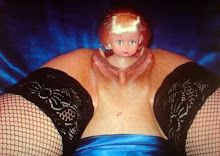
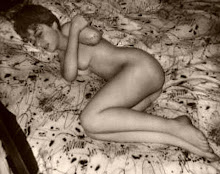


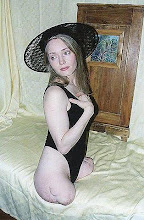
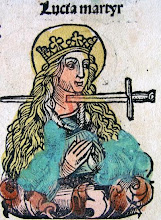


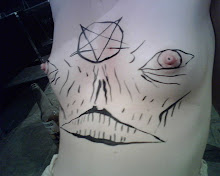.jpg)
Inga kommentarer:
Skicka en kommentar